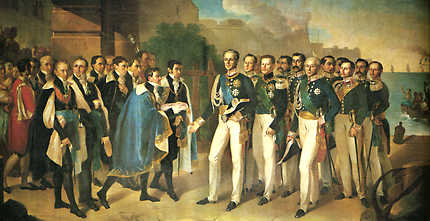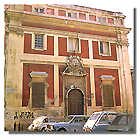
A year later, the exiled king (Carlo Emanuele IV) returned to the mainland with the
hope of being reinstated in Piedmont. He conceded full power over the island to Carlo
Felice and abdicated in favor of his brother Vittorio Emanuele, duke of Aosta. In
the following years, and especially in 1812, the city suffered greatly from famine and
established a hospice for the poor.
On May 20, 1814, following the Treaty of Fountainbleau, the Savoy monarch returned
to Turin, turning over the regency to his wife Maria Teresa. A year later it passed
to Carlo Felice, duke of Genevese (who became king of Piedmont on March 12, 1821
after the abdication of his brother Vittorio Emanuele I).
In 1847, Cagliari's General Council petitioned King Carlo Alberto that the Sardinian
people "be included in the Italian union" and "given the same rights as mainland
subjects."
Demonstrations were held in favor of this "perfect union," and, in Genoa,
the king signed the unifying act that sanctioned the following: the end of customs levies,
extension to Sardinia of mainland civil and penal legal codes, the abolition of the
positions of Viceroy and the Royal Secretary of State and War.
On December 30, 1860, a royal decree removed Cagliari from the list of military strongholds.
This opened the debate over the elimination of the bastioned walls.
The final decision
condemned those of Marina, Stampace, and Villanova, but saved the walls of Castello. Cagliari became the first city in Italy to have two urban plans, drawn up
by the architect Gaetano Cima.
|







